An Aggressive Topical Treatment Brought Five Decades of Sun Damage to My Skin's Surface
It hurt like a b–tch.


Nothing gets us more excited than talking about a not-so-little tweakment or a nip-tuck procedure. In the spirit of transparency, Marie Claire’s aesthetics column, Life in Plastic, delivers a first-hand peek into what goes on behind the doctor’s door.
Wendy is a 51-year-old woman who was treated with Efudex to treat precancerous skin cancer growths. This is her story, as told to Marie Claire Senior Beauty Editor, Samantha Holender, edited for length and clarity.
I was always so self-conscious about my body. I felt hotter when I was young and tan, 100 percent. I’m not afraid to admit it. But because of that, my sun exposure throughout my life has been horrible. I started with tanning beds when I was a child because my mom told me it would improve my acne. Did it work? Probably not, but it made me look a little better. Then I would go every year from April through May, so I was tan by the time the weather got really nice. If I had a vacation planned for the winter, I’d go again. We didn’t know how bad tanning beds were for us.
But that was just the pre-season tan. When it was summer on the Jersey Shore, my only mission was to fry my skin. I would get together with all my friends and bake on the beach for hours. I would use a little sunscreen, but not nearly enough. SPFs weren’t nice like they are today; they were thick and goopy and greasy. But let me tell you: I wish I sucked it up and used the whole freaking bottle.
By the time I reached my late 30s and early 40s, I could barely spend time in the sun without being in actual pain. My body, especially my chest, started to get covered in sun spots and discoloration, like red polka dots. It was bumpy and crusty, almost like sandpaper. Essentially, it was gross. They used to go away during the off-season, but over the past few years (I’m 51 now), they’ve become more of a permanent fixture. I can also feel the heat on my chest when it's hot outside. The overexposure has made my skin sensitive to the sun that it almost makes me think I’m burning the second I step outside. And I wear a lot of sunscreen now.
It was around this time that I started going for regular body checks. Needless to say, I was not an easy patient. My dermatologist was sending spots for biopsy almost every year. She was using cryoablation—which is basically like a cold zap—to remove pre-cancerous spots regularly. “We call these spots pre-cancerous growths, which are not cancer, they are the stage before skin cancer,” explains board-certified dermatologist Nava Greenfield, MD at Schweiger Dermatology in New York City. “These pre-cancer cells have not reached the first layer of skin, but they often need to be biopsied.”
It got to the point where I was getting so many red, scaly spots on my chest that biopsies and cryoablation became unsustainable—and frankly just annoying. But no part of me wanted to develop skin cancer, so I finally asked about more aggressive treatment options.
Get exclusive access to fashion and beauty trends, hot-off-the-press celebrity news, and more.
The Consultation
My doctor suggested addressing the whole area at once with something called Efudex, which, as explained to me, would make most of the pre-cancerous cells hiding underneath the surface layer of the skin rise to the top. “Efudex is the brand name for topical 5-Fluorouracil, which is a topical chemotherapy treatment most commonly used to treat precancerous lesions to help reduce someone’s risk of developing skin cancer,” says board-certified dermatologist Robert Finney, MD, at Soho Skin and Laser. “An easy way to describe how it works is by selectively targeting and killing the rapidly dividing cells from precancerous and cancerous growths.” It’s most common use is to target precancerous growths called actinic keratoses—roughly one in 20 actinic keratoses will march on to form squamous cell carcinoma, a common type of skin cancer, he explains. “Efudex can bring underlying sun damage in the dermis to the surface and then treat it [by stoping the pre-cancerous cells from developing]. In doing so, it can help prevent precancerous spots from becoming cancerous,” explains board-certified dermatologist Marisa Garshick, MD.
I had never heard of it before, and it certainly didn’t sound pleasant, but I had to do something. My doctor called in the Efudex prescription, which I would apply once a day. She told me not to worry if my chest started to look angry (it did) and told me we would check back in at the end of the month.
The Treatment
The cream didn’t feel like anything when I first put it on my skin. I used a thin layer, from the top of my chest to the top of my boobs, every night. I guess you could do it in the morning instead, but night just felt better for me. At first, nothing really happened and it stayed like that for about a week and a half. That’s when it took a turn.
My chest started to get red and the pre-cancerous spots were rising. It hurt like a b–tch—imagine a combination of a sunburn and an actual burn. A really, really, bad burn. I slept with Aquaphor coated over my entire chest and surrounding areas every night because it felt so dry and tight. “It can be associated with redness, irritation, scabbing, and ulceration, which can increase the risk of infection, but the main side effects relate to skin redness, dryness, and irritation,” explains Dr. Garshick.
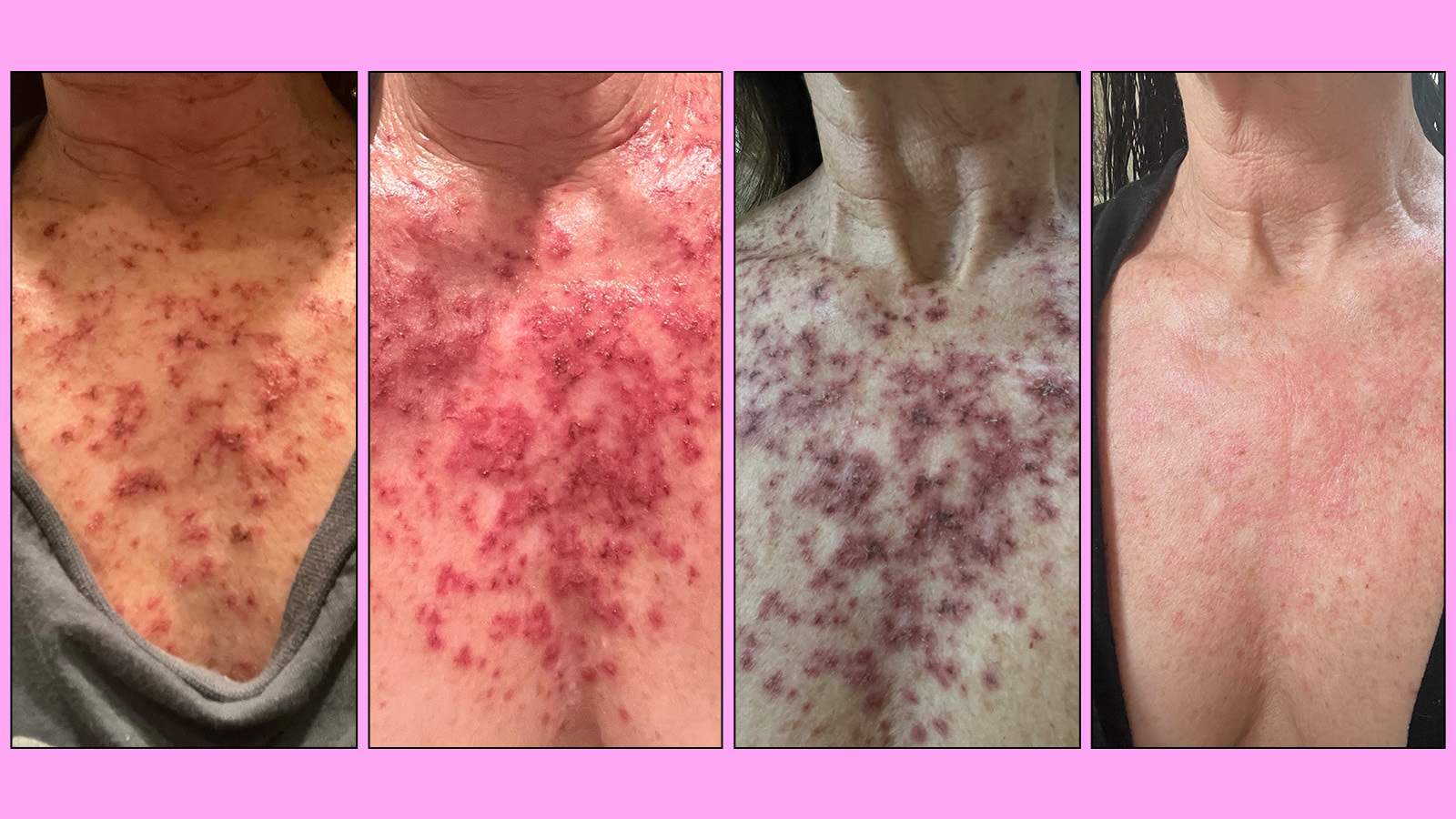
Wendy's healing during her Efudex treatment.
It was probably the worst around the three-week mark. My chest looked fire-engine red and almost purple in parts. It got to the point where I almost didn’t think I could use any more because it hurt so badly, but the spots really started to rise up to the upper layer of my skin (the epidermis). I could literally see and feel it working. It’s like a laser that brings everything to the surface—wherever the damage is, it just lights right up.
I could only wear high-neck tops (it’s really scary looking) and some days I just felt more comfortable staying at home all day. On days when it was extra bad, I would take some Tylenol or apply a prescription hydrocortisone cream, but it was more uncomfortable than painful. Eventually, the purple dots began to slough off and it became more of a light red color. That final jump lasted another week.
The Results
By six weeks, almost all of the pre-cancerous, crusty-looking spots had flaked off and my skin tone started to return to its normal shade. My doctor was really pleased with the results, too. Now, it looks so much smoother, and it feels so much smoother. It doesn’t have a rough or bumpy texture anymore. I’m six months out from the treatment and I haven’t gotten any of the little crusties back, which is great. It’s ugly still—it’s certainly unattractive—because that visible sun damage I’ve accumulated through the years doesn’t go anywhere. I still have sun spots and hyperpigmentation. You can still see white spots where I’ve had spots frozen off. But overall, the rough texture is gone, and I much prefer the Efudex treatment to the cryoablation because while it really sucks for a month, I then know I’m good to go for at least a few years.
I’ll likely have to do Efudex on my face pretty soon, too. It’s a lot—six weeks of having those marks on my chest take over my face is not something I’m looking forward to. Currently, the red, scaly marks come and go with the summer season, but once they become more permanent, I’ll just have to bite the bullet. The difference is that I can cover my chest for the six weeks of the Efudex treatment. With my face—well, unless I’m wearing monster sunglasses and a head scarf for a month and a half—it’s a little more difficult.
My Takeaway
It’s ironic, really. I was always tanning because I was self-conscious. That was always my struggle. And in the process, it really just made me self-conscious about another part of my body. But I take peace in knowing I’m doing what I can to keep myself healthy and safe. The Efudex treatment isn’t foolproof—I still go for yearly skin checks to see if anything looks suspicious—but it has made a huge difference in terms of my overall skin health. I haven’t had to get any biopsies or have anything frozen off since.
If I could get in a time machine, you’d catch me in a thick, goopy sunscreen hiding under an umbrella. But since that’s impossible, I hope my story encourages everyone else to do just that.

Why Trust Marie Claire
For more than 30 years, Marie Claire has been an internationally recognized destination for news, fashion and beauty trends, investigative packages, and more. When it comes to the products Marie Claire recommends, we take your faith in us seriously. Every product that we feature comes personally recommended by a Marie Claire writer or editor, or by an expert we’ve spoken to firsthand.
Meet the Experts
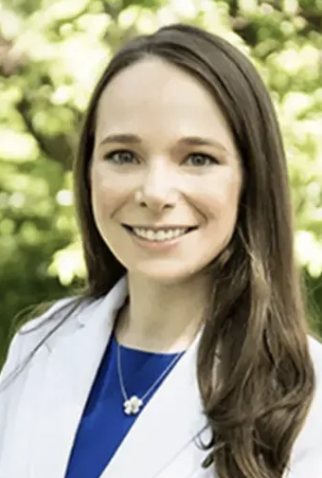
Marisa Garshick, MD, FAAD is a leading board-certified dermatologist serving patients throughout Manhattan, New York and Englewood, NJ at MDCS Dermatology: Medical Dermatology & Cosmetic Surgery, as well as an assistant clinical professor of dermatology at Cornell - New York Presbyterian Medical Center. Dr. Garshick provides a wide variety of cosmetic and medical procedures and services including treatments for acne, eczema, hyperhidrosis, moles, psoriasis, rosacea, signs of aging, skin cancer, skin tags, vitiligo, and wrinkles.
She completed her undergraduate education at Emory University and attended medical school at Tufts University School of Medicine, where she graduated with Research Honors and Alpha Omega Alpha. As a medical student, Dr. Garshick was awarded the prestigious Doris Duke Clinical Research Fellowship at Harvard Medical School, during which she performed dermatology clinical trials and research at Massachusetts General Hospital. She was also awarded the American Medical Women’s Association Glasgow-Rubin Academic Achievement Award for graduating in the top of her class and the William Dameshek Award for Research Excellence. Dr. Garshick’s post-graduate training in dermatology began with an internship at Memorial Sloan Kettering Cancer Center. She completed her dermatology residency at Cornell’s New York Presbyterian Hospital, where she served as Chief Resident in Dermatology. Dr. Garshick has numerous publications in scientific journals and book chapters, including a chapter on the treatment of acne, and has presented at national meetings. She specializes in general medical dermatology, including adults and pediatrics, and cosmetic dermatology, including neurotoxins, fillers, chemical peels, and lasers. Dr. Garshick is also involved in teaching the dermatology residents at Cornell, leading discussions reviewing the latest dermatology literature. She is a member of the American Academy of Dermatology, the American Society of Dermatologic Surgery and the Women’s Dermatologic Society, as well as an Assistant Clinical Professor.
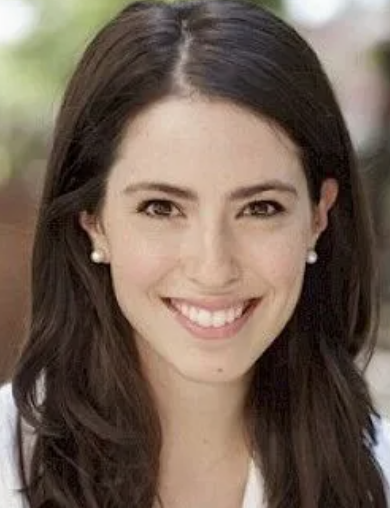
Dr. Nava Greenfield is a dermatologist practicing at Schweiger Dermatology Group. Dr. Greenfield earned her Bachelor’s Degree from Queens College, City University of New York, where she graduated Cum Laude with honors in mathematics, natural sciences, chemistry and biochemistry.
Dr. Greenfield attended medical school at the Albert Einstein College of Medicine, Yeshiva University. She completed her internship at Yale-New Haven Hospital and her residency in dermatology at SUNY Downstate Medical Center. Dr. Greenfield has been published in many medical journals, including The Journal of Dermatological Treatment, the Journal of Women’s Dermatology and Pediatrics. Dr. Greenfield is a member of the American Academy of Dermatology, Alpha Omega Alpha Honor Medical Society, Women’s Dermatologic Society and the American Medical Association.
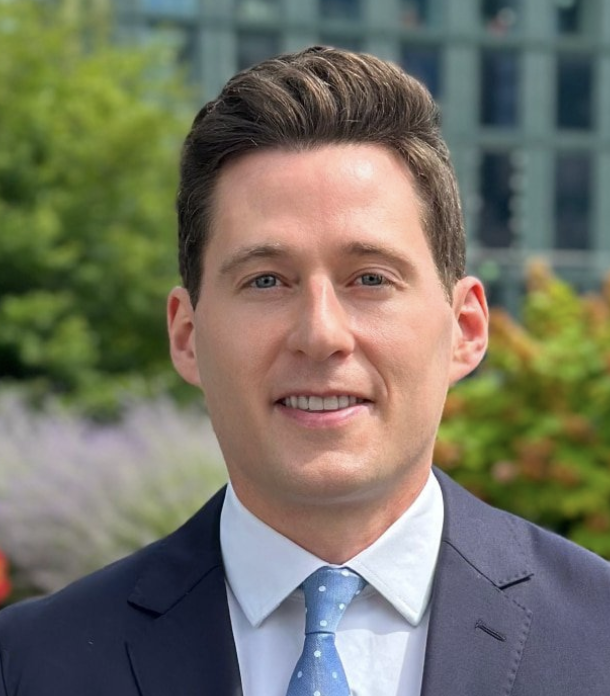
Meet our Founder, Robert Finney, M.D., a Board-Certified Dermatologist, Fellowship-Trained in Hair Restoration and Aesthetics. Originally from Pittsburgh, PA, Dr. Finney completed his undergraduate and medical degrees at Pennsylvania State University. He completed his internship and dermatology residency at Thomas Jefferson University Hospital in Philadelphia, PA where he served as chief resident during his final year. Following his residency, he completed an advanced fellowship in aesthetics, hair restoration, and skin surgery with renowned hair surgeon Dr. Marc Avram in New York City.Dr. Finney approaches aesthetics holistically, taking into account not only patients' current concerns, but also planning for the future. He takes pride in establishing longitudinal relationships, educating his patients on the 3D-nature of aging, and ultimately ensuring a future of aging gracefully. His goal is to ensure that his patients look refreshed, never “done”.As a hair expert, Dr. Finney continues to push the standard of care, and innovates to create cutting edge, individualized treatment plans. He has been treating his own genetic hair loss since his mid-20s; therefore, he is truly able to view each treatment through the lens of the patient and provider. This is what led him to create his ScalpStim Pro treatments: efficacious, customized treatments for his patients.Dr. Finney has authored several peer-reviewed articles and book chapters on hair loss. He frequently lectures both nationally and internationally on the topic, leading him to be sought after by major media outlets to share his expertise re: skin and hair. Dr. Finney takes pride in helping mold the next generation of dermatologists, acting as clinical assistant professor at Mount Sinai - Icahn School of Medicine. When not seeing patients, Dr. Finney loves reading historical non-fiction, and staying active playing ice hockey, hiking or competing on peloton.
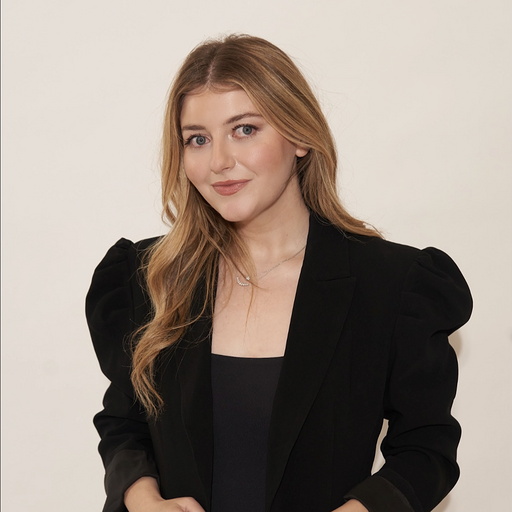
Samantha Holender is the Senior Beauty Editor at Marie Claire, where she reports on the best new launches, dives into the science behind skincare, and shares the breakdown on the latest and greatest trends in the beauty space. She's studied up on every ingredient you'll find on INCI list and is constantly in search of the world's glowiest makeup products. She's constantly tracking the biggest nail and hair trends to pop up in the beauty space, going backstage during fashion weeks, tracking celebrity looks, and constantly talking to celebrity hair stylists, nail artists, and makeup artists. Prior to joining the team, she worked as Us Weekly’s Beauty and Style Editor, where she stayed on the pulse of pop culture and broke down celebrity beauty routines, hair transformations, and red carpet looks. Her words have also appeared on Popsugar, Makeup.com, Skincare.com, Delish.com, and Philadelphia Wedding. Samantha also serves as a board member for the American Society of Magazine Editors (ASME). She first joined the organization in 2018, when she worked as an editorial intern at Food Network Magazine and Pioneer Woman Magazine. Samantha has a degree in Journalism and Mass Communications from The George Washington University’s School of Media and Public Affairs. While at GWU, she was a founding member of the school’s HerCampus chapter and served as its President for four years. When she’s not deep in the beauty closet or swatching eyeshadows, you can find her obsessing over Real Housewives and all things Bravo. Keep up with her on Instagram @samholender.